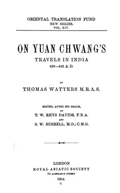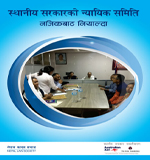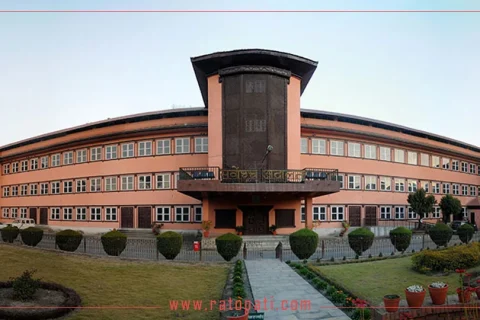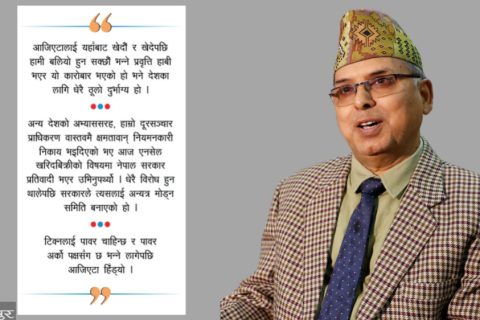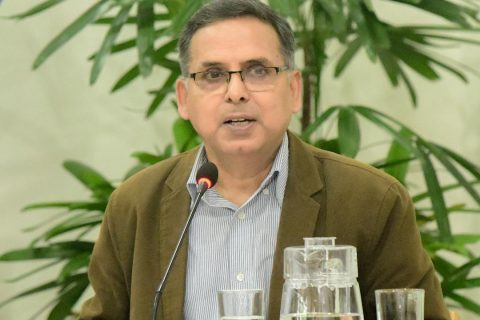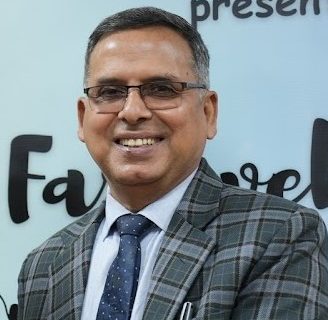(Vol 06, No. 22, May 10, 2013)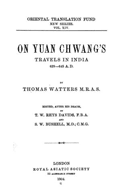
Thomas Watters’ two volume book On Yuan Chwang’s Travels in India, 629-645 A.D. (London: Royal Asiatic Society, 1904/1905) was put in order from an unpublished manuscript after his death in 1901.
Yuan Chwang, also known as Hiuen Tsang, was a great Chinese monk. His nineteen-year pilgrimage through Chang’an of China to Central Asia and eventually South Asia is a rich source of information.
Watters, a British scholar of Chinese Buddhism, describes Yuan Chwang’s journey that was accomplished between 626 and 645 A.D. with great energy and commitment. It includes travel accounts of the monk from Kao Chang to the Thousand Springs, from Taras to Kapis, from Lampa to Gandhar, from Udyana to Kashmir, from Kashmir to Rajapur, from Cheh-ka to Mathura, from Sthaneswara to Kapitha, from Kanyakubja to Visoka and from Saravasti to Kusinara. It also describes Chwang’s trip from Varanasi to Nepal, and then to Magadh and Sri Lanka. The author also outlines general descriptions of India as furnished by Yuan Chwang before describing the story of his journey from Lampa to Gandhar.
The Great Tang Records on the Western Regions included the original details of Yuan Chwang’s travel stories. The present book of Thomas Watters is the first analytical work on the great pilgrim’s visits. It has also tried to explore these visits based on other similar accounts and recent research and explorative works. Nepal finds only some passing mention in the first volume. All relevant Buddhist locations and monasteries of that period that Yuan Chwang saw or observed in Nepal have been dealt with or mentioned in the second volume. It is here that the author has described his visit to Kapilavastu and Lumbini, among other places in this location.
Yuan Chwang’s journey was not just a pilgrimage. He describes at length the territory and the natural world that he passed through. There are descriptions about climate characteristics, national customs and moral conduct of the people he comes across. Two other Chinese pilgrims – Tseng Tsai and Fa Hsien had already visited Lumbini long before Yuan Chwang visited it. These visits were held in the fourth and fifth centuries. But this particular visit was a record breaking one.
On his way to Nepal, Chwang also visited Sravasti, one of the six largest cities in the region during Gautama Buddha’s lifetime. Watters noted that ruins still lied on the upper course of the Rapti in Nepalese territory, near the point where the river emerges from the hills. His description of the mountains, caves and hill at Sravasti offer additional proof that the city lay close to the foot of the Himalayas. Watters pleads that Sravasti was in the Khajura locality, a short distance to the north of Balapur and not far from Nepalganj in a north-north-east direction. Mentions Watters: “But this proposed identification also has its difficulties, and must await further developments. No discoveries have been made to support the identification, but there seems to be the usual supply of mounds and ruins.”
From Sravasti, Yuwan Chwang traveled to Kapilavastu, his last stop before Lumbini, the birthplace of Buddha. He describes Kapilavastu about 800 miles in circuit, and as containing more than ten deserted localities all in utter ruin. The capital locality was in such a complete waste that its true area could not be ascertained. But the solid brick foundations of the palace within the capital locality still remained. As the district had been left desolate, it was very sparsely inhabited for a very long time. The country was without a sovereign, each locality having its own chief. The soil was fertile and farming operations were regular, the climate was temperate, and the people were genial in their ways.
There were remains of above 1000 Buddhist monasteries, and near the palace locality was an existing monastery with above 80 inmates, adherent of the Sammatiya School. There were two Dev temples, and the sectarians lived Pell Nell. The pilgrim proceeds to enumerate the various objects of interest, all connected with the Buddha’s life, which he found within the capital. The place where Buddha was born has been spelled as La-fa-ni[Lumbini] grove. There are many important details. The pilgrim finds the bathing tanks of Shakyas beautiful. He also refers to the Ashok tree, where Buddha was born. He also writes about shrines and paintings, topes of previous Buddhas, King Virudhaka, the Buddha’s return home, the Sakya local god, and the death of the Buddha.
Yuan Chwang visited Ni-po-lo [Nepal] valley around AD 645. He describes it as a country situated in snow mountains, and surrounded by hills and valleys. He finds it producing grain and fruit, and also copper, yaks and francolins. The use of copper coins has been noted as medium of exchange. Yuan Chwang noted that the Buddhist monasteries and the Deva temples touched each other in Nepal. The Kings are scholarly, believe in Buddhism and come from the Kshatriya Licchavi group. He refers about King Ang-shu-fa-ma who had composed a treatise on etymology. He refers to a fantastic multi-storey Buddhist monastery in an isolated hill close to the south of the capital. The readers may find that Yuan Chwang’s references on Ni-po-lo, its development and civilization very scanty. At this time, Nepal was a dependency of T’u-fan [Tibet], but had contributed a contingent to King Wang Hstian-tse to fight out the “usurper of Magadha.” In Yuan Chwang’s opinion, however, the people of Nepal are “rude and deceitful.” They slighted “good faith and rectitude.” They are “ugly and coarse in appearance” and are not educated. Moreover, he admits that they are skilled mechanics.
King Virudhaka of Kashi Kosala virtually annihilated the little autonomous tribe of Shakyas of Kapilavastu. After he annexed this territory, the remaining Shakyas fled northward to the hills, and settled in western Nepal. “In order to hide from prosecution, they took the title of Koliya. When they learned of the forest monastery in Sankhu established during the time of Buddha, they migrated to Kathmandu Valley under the Kirats. Later, they established two settlements in Yembu and Yengal. In Yengal, they renovated the monasteries of Manjupattan. By Licchavi era, Yembu and Yengal were called Koligram and Dakshin Koligram respectively. They established various monasteries in both settlements, and retook the title of Shakyas in the late Licchavi era. Various monastic traditions are still followed to date in many of these monasteries.”
The preface contributed by T. W. Davids points out that Thomas Watters left behind him a finished work. It was ready for the press. It states that “the only translation into English of the travels and the life of Yuan Chwang, the one made by the late Mr. Beal, contains many mistakes. As Mr. Watters probably knew more about Chinese Buddhist literature than any other European scholar, and had, at the same time, a very fair knowledge both of Pali and Sanskrit, he was the very person most qualified to correct those mistakes, and to write an authoritative work on the interpretation of Yuan Chwang’s most interesting and valuable records. The news that he had left such a work [before his death] was therefore received with pleasure by all those interested in the history of India.”
Thomas Watters’ Volume II includes two maps and an itinerary of Yuan Chwang prepared by Vincent A. Smith. There are also indexes of the names of Indian persons and the Indian places translated into Chinese names or forms. The book has many references that a modern reader may find interesting.
When returning to China, Yuan Chwang passed through Ka – Sha [Khasghar] in western Tibet which is also linked with the ancient Khas people. There are dozens of places which reflect Khas names and phonetics, but which have not been in studies keeping this perspective in view. Watters has indicated places where Yuan Chwang might have been exaggerating in his report and descriptions. For example, he thinks it is not clear if Yuan Chwang reaches Ni-po-lo himself, or was only writing about it based on what he came to know while he was in India. At the time when this book was written, it was certainly a remarkable piece of work.

